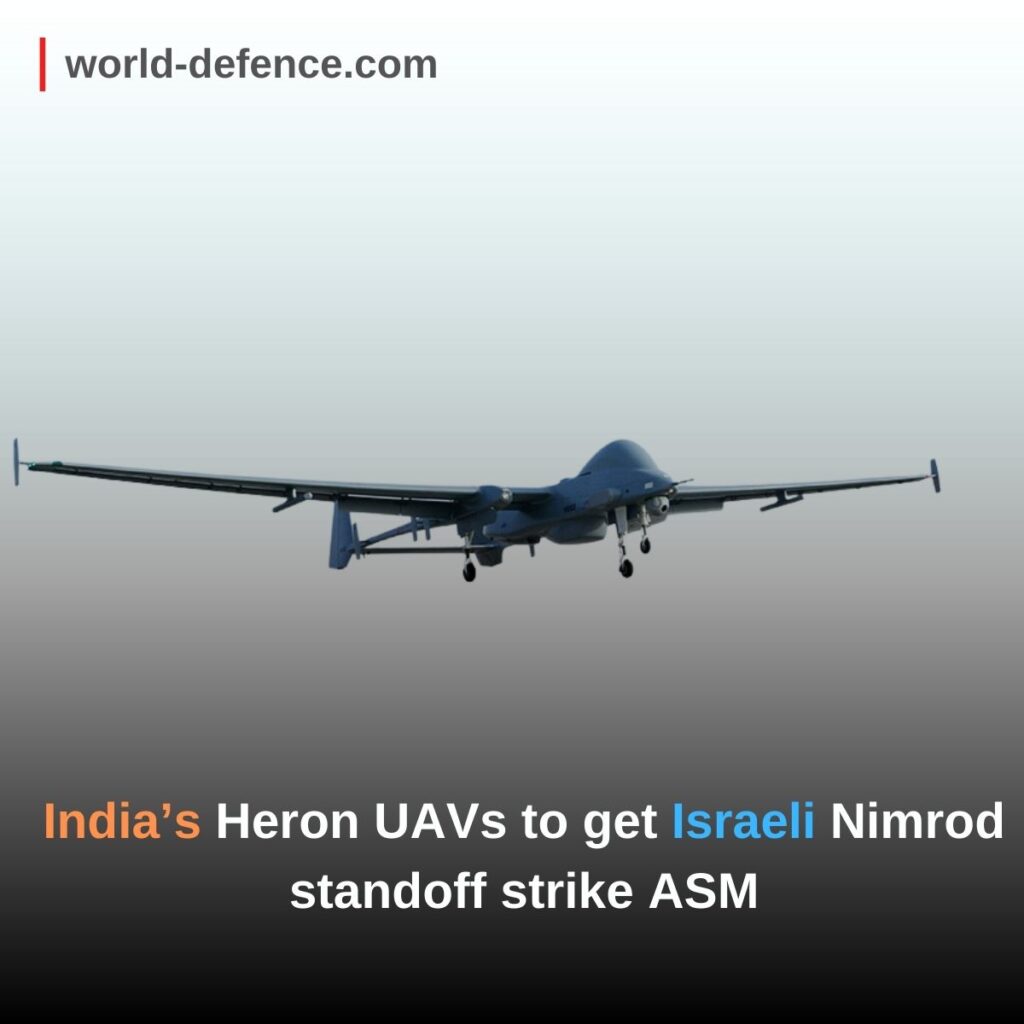Indian Air Force (IAF) is also set to upgrade its Heron UAVs, Medium Altitude Long Endurance (MALE) unmanned aerial system (UAS) under Project Cheetah with Israeli-made Nimrod, a long-range air-to-surface missile developed by Israel Aerospace Industries that provides standoff strike ability against a variety of point targets such as armored personnel carriers (APCs), ships, bunkers, personnel concentrations, and guerrillas.
Nimrod is a long-range semi-active laser-guided anti-tank guided missile (ATGM), that has a range of from 26km to 35km to a whooping 50km depending on the variant that might be procured by the IAF.
Nimrod missiles also might be included in the recently acquired Heron-Tp by private companies in India.
ALSO READ: Lockheed Martin’s F-21 is expected to be developed in Hyderabad
Heron UAVs
Multi-Role MALE UAS
Highlights
- Combat-proven ISTAR operational configurations, with hundreds of thousands of flight hours
- Multi-sensor capability
- Proven safe dual automatic taxi-takeoff and landing systems (ATOL)
- Satellite communication (SATCOM) for Beyond Line-Of-Sight (BLOS)
- Fully redundant, Fully automated
- Proven in extreme weather – Cold, Hot, Humid, Icy, Snowy and High-Altitude runways
- Capable of landing on unpaved runways
- Safe, reliable and easy operation
- Best flight performance and payload capacity
- Proven high MTBF/MTBL and low lifecycle cost
ALSO READ: Roscosmos is going to supply 10 rocket engines to India
The Heron UAVs are Medium Altitude Long Endurance (MALE) unmanned aerial system (UAS) for strategic and tactical missions. Globally operated for customers worldwide in both strategic and tactical missions.
The Heron is capable of operations of up to 45 hours duration, at up to 35,000 ft. Robust and combat proven with hundreds of thousands of operational flight hours, Heron is currently serving more than 20 global leading customers in a wide array of mission types.
Heron’s multi-mission system utilizes up to six diverse mission payloads simultaneously allowing complex intelligence, surveillance, target acquisition and reconnaissance (ISTAR) missions over any terrain, including forests, jungles or swamps, at sea or over urban areas. The system also has a unique ability to utilize furnished sensor suites according to customer needs.
Heron’s sensors feed collected ISTAR data to ground segment and tactical-level end users in real time, through direct line-of-sight or via satellite communications. This essentially enables the operational range of the Heron to be limited only by fuel availability, with missions ranging over 1,000 km from its operating base.

